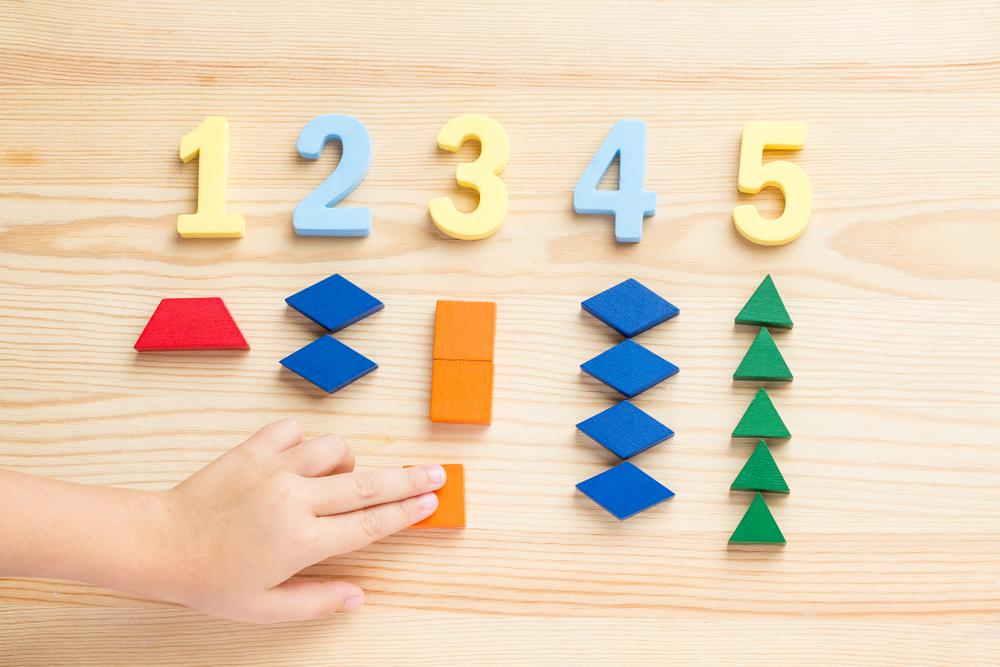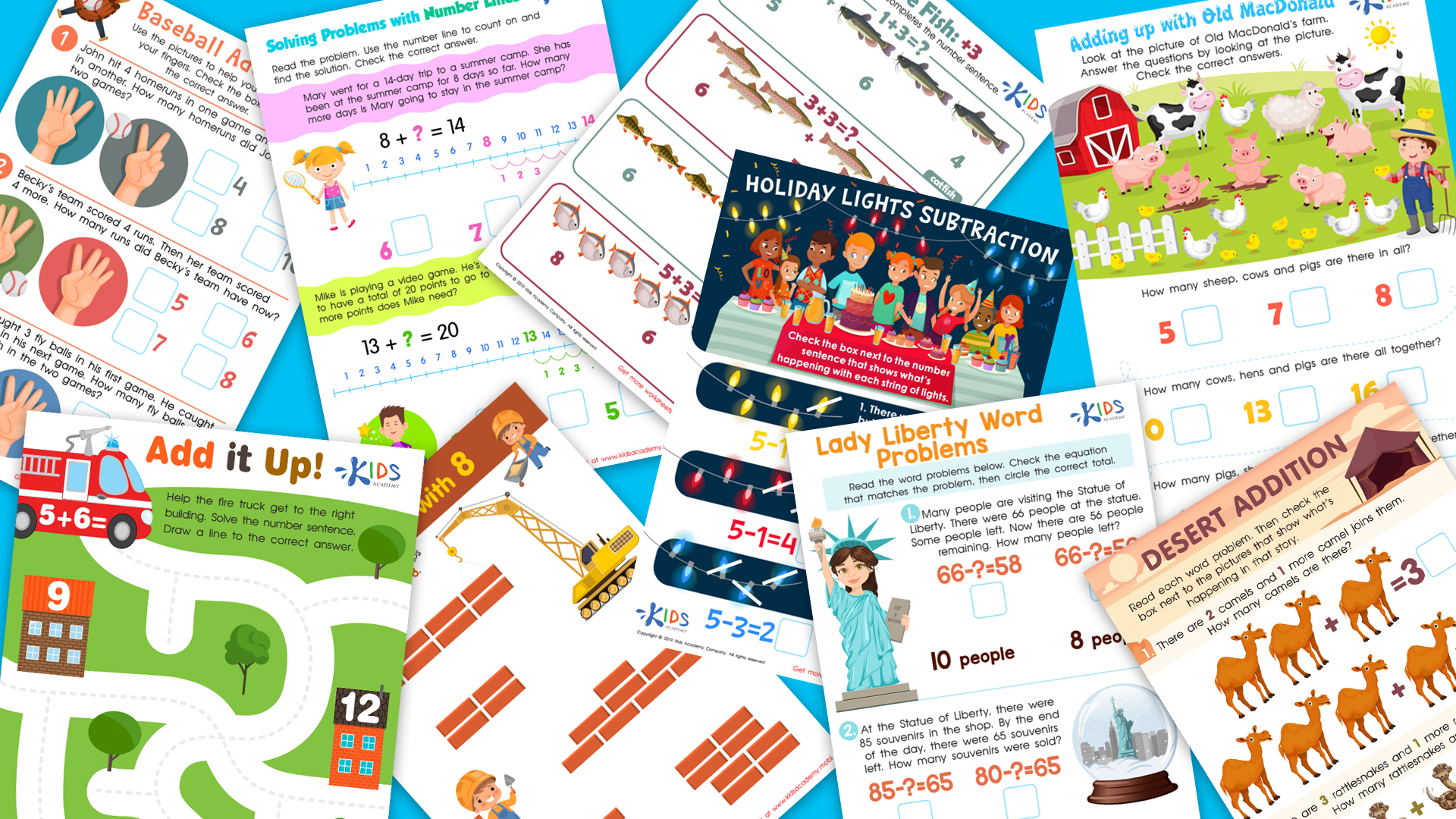Reading comprehension Subtraction Worksheets for Ages 5-6
5 filtered results
-
From - To
Unlock your child's potential with "Reading Comprehension Subtraction Worksheets for Ages 5-6"! These expertly designed worksheets seamlessly integrate subtraction practice with early reading skills, making math both engaging and educational. Each worksheet features simple subtraction problems combined with short, age-appropriate reading passages to enhance comprehension skills. Ideal for young learners, these activities promote critical thinking and bolster math confidence through fun, interactive exercises. Perfect for classroom or at-home practice, these worksheets are a valuable resource for parents and educators aiming to build a strong mathematical and literary foundation. Explore now to make learning fun and effective!
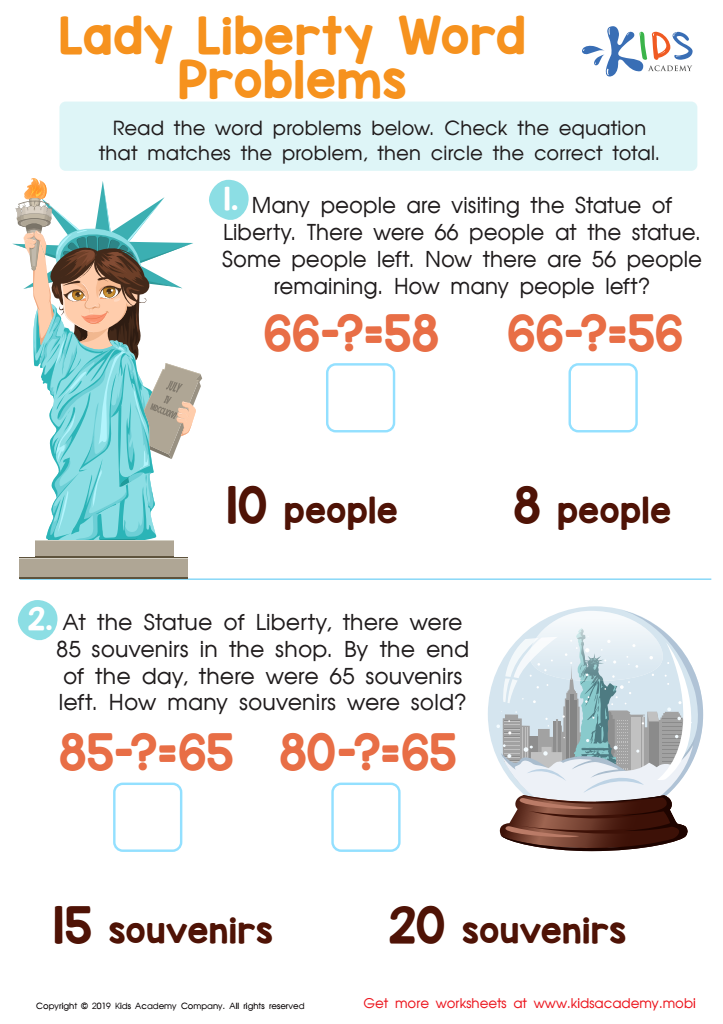

Lady Liberty Worksheet


Match the Word Problems Worksheet
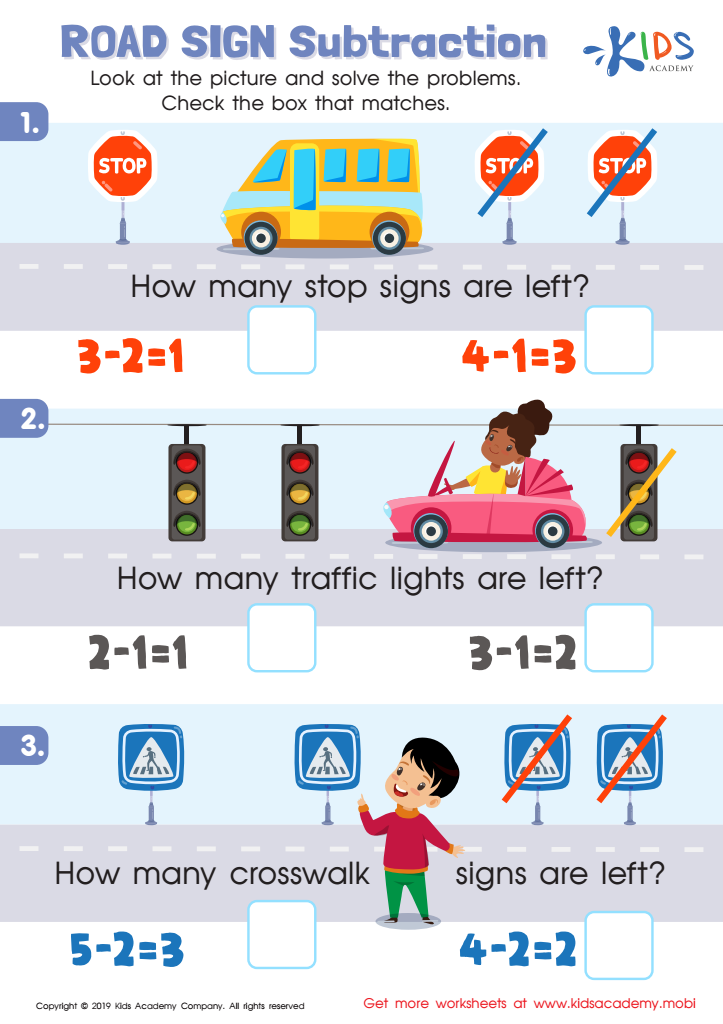

Road Sign Subtraction Worksheet


Harvesting Subtraction Stories Worksheet
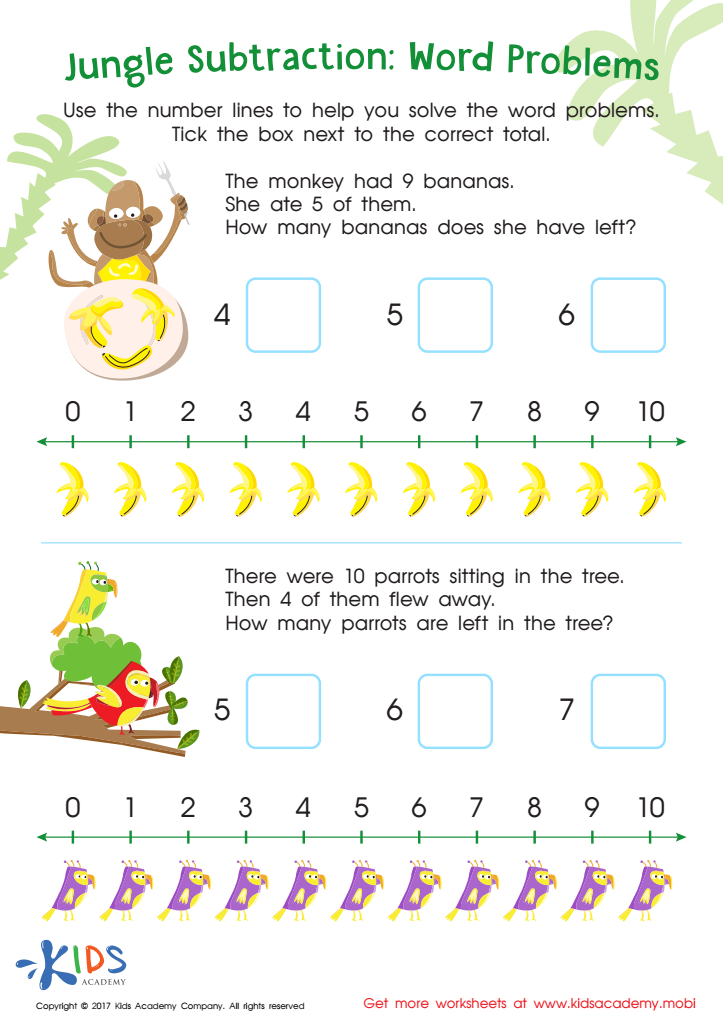

Jungle Subtraction Word Problems Substraction Worksheet
Reading comprehension is foundational for lifelong learning, and understanding it in early grades significantly influences future academic success. For children aged 5-6, building effective reading comprehension bridges crucial developmental pivots at this tender age. When young learners grasp not just how to decode words but also understand their meaning, they become equipped to engage with texts deeply, appreciate nuances, and infer meanings.
Incorporating subtraction in reading comprehension for these young minds is equally essential. Mathematical literacy starts early. By intertwining basic arithmetic like subtraction with reading comprehension exercises, children develop dual literacy—both mathematical and linguistic. This integration is known to engage multiple brain areas simultaneously, fostering cognitive growth.
This dual-focus learning is valuable because it builds problem-solving skills, enhances logical reasoning, and strengthens memory retention. For instance, a story problem involving subtraction requires children to comprehend the narrative, understand quantitative elements, and execute mathematical operations—all within the realm of their cognitive development stage.
Investing in reading comprehension and subtraction for ages 5-6 prepares children for more complex tasks. It nourishes critical thinking, nurtures independent learning, and lays the groundwork for future proficiency in a multidimensional, literate landscape—all keystones for academic success and practical life skills.
 Assign to My Students
Assign to My Students






